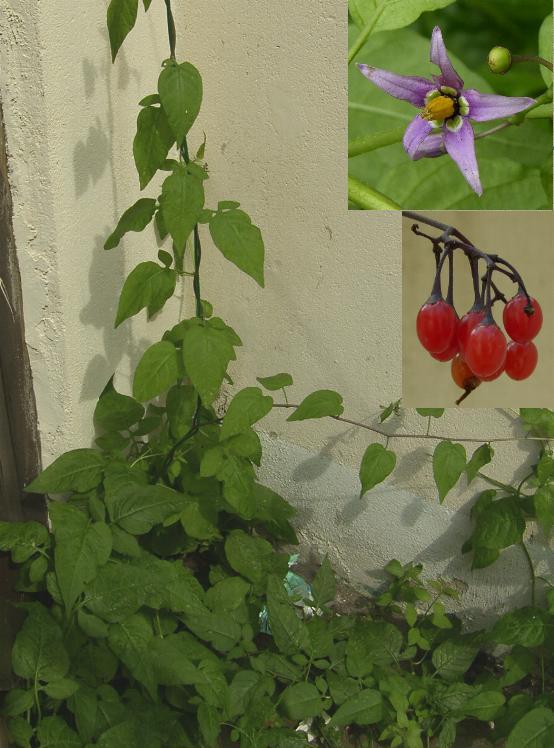Bittersweet is a perennial which scrambles through other plants, clinging on by twining around their stems or any other support. It is a native of Asia and Europe, but has become naturalised in other regions where it is sometimes a problem weed as it smothers less vigorous species. All parts of the plant are poisonous as they contain the alkaloid solanine, which affects the nervous system. The mature, dark-green leaves have very distinctive lobes at the base and are arranged alternately on the stem. If crushed they have an unpleasant odour, a characteristic of most toxic plants. Young leaves are pointed ovals and due to the twining stems may be mistaken for Bindweed. The stems can twine to gain support and can reach up to 2 metres, but on open ground they will creep sideways and root at the nodes. Older stems become semi-woody. Flowering occurs from June to September with loose clusters of star-shaped purple flowers, typical of the Solanaceae Family. Bittersweet has been used as a herbal medicine and in more dubious practices. In Germany it was placed around the neck of cattle to ward off evil (Culpepper also refers to this - see below). The crushed berries were used on infected tumors on the fingers (whitlow or felons), and for fingers inflamed by the cold. The alkaloids contained in the plant have powerful effects and an overdose will paralyse the central nervous system. It is rarely used to-day and definitely not for home medication, but the twigs and root-bark were listed as official medicines until 1907. It increases skin and kidney function so it is indicated as a diuretic, to treat skin conditions and for rheumatism as it is claimed to cleanse the body of impurities. The taproot is quite easily removed, older specimens may regenerate if remaining roots are woody. A systemic weedkiller such as Glyphosate should work, but a stronger solution may be needed for older plants. A selective brushwood killer would also work. Nicholas Culpepper Follow these links for further details on Weeds, Weed Removal and Weed Prevention. |
 |